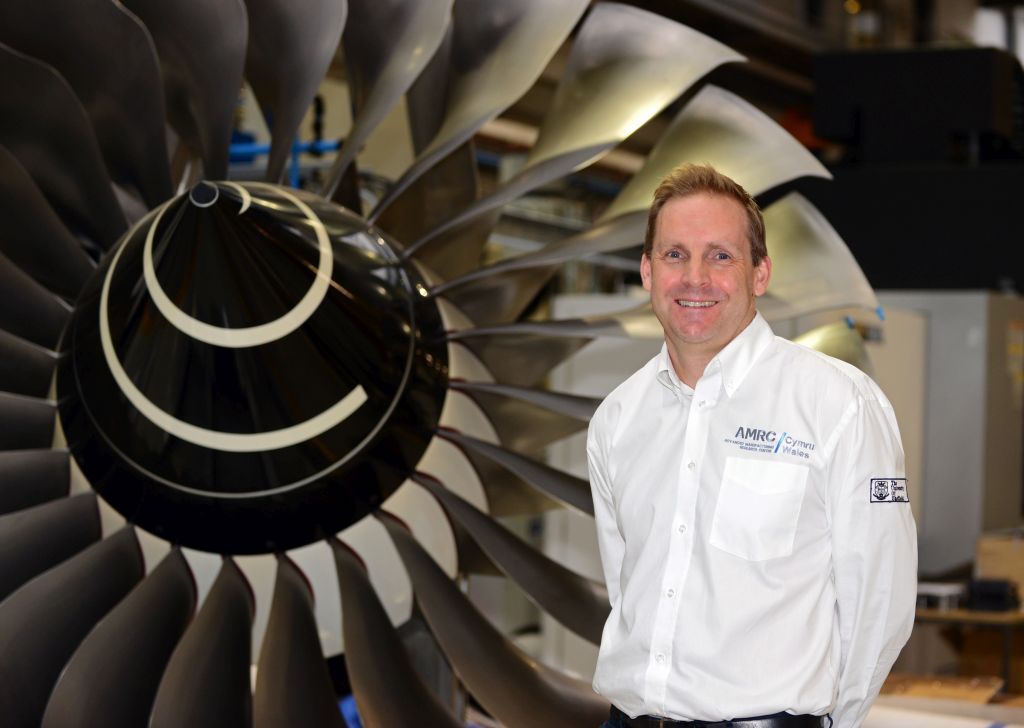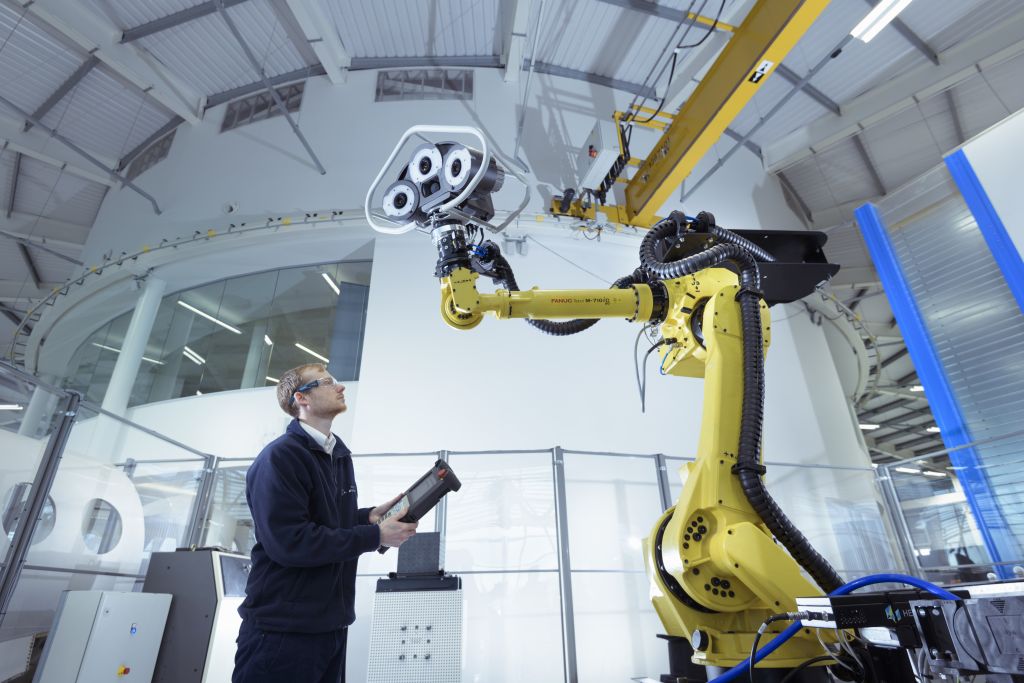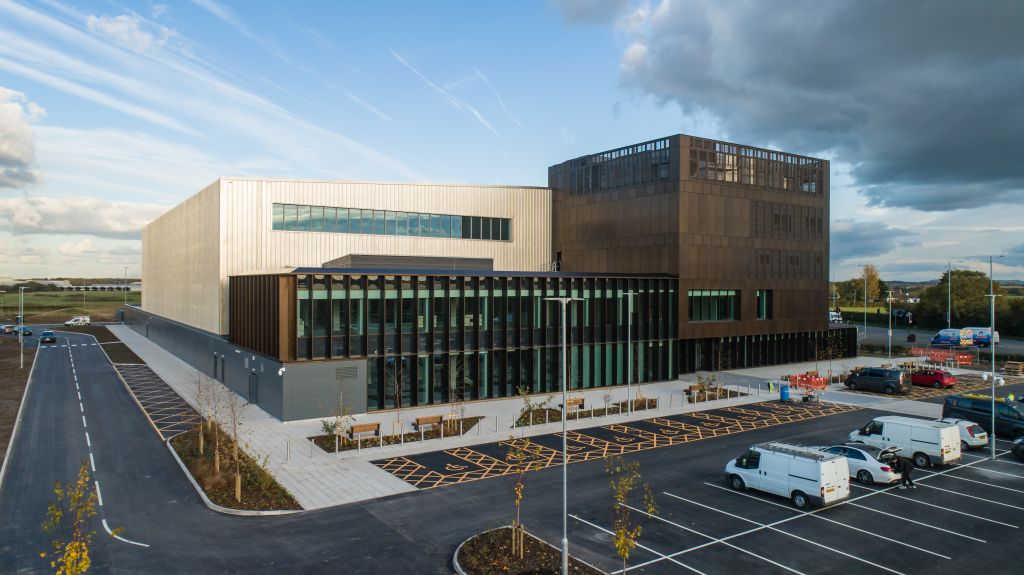The data-driven course to net zero

Andy Silcox, research director at the University of Sheffield AMRC Cymru, says zero-emissions flight won’t be possible if you don’t have the right data.
Since Clive Humby coined the phrase ‘Data is the new oil’ 16 years ago, organisations have been obsessed with dredging up as much unfiltered information as they possibly can about their products, processes and people.
In this, manufacturers are in a sought-after position. Every manufacturer has data and many have more than they could possibly ever store; the problem is the majority of manufacturers just don’t know what it is telling them. Humby said that data was like crude oil in that it had value, but could not be used unless refined. But oil has value when it is stored; if you do nothing with your data, it is worthless. The potential of data though, that is acquired accurately, processed efficiently and utilised properly is enormous.
Data has the power to improve individual manufacturing processes. It has the power to enhance shopfloor operations. Crucially, data also has the power to manage and reduce carbon emissions. For the aerospace sector, this is an important step to delivering zero-emission flight – in fact, extracting, analysing and utilising the right data is the very first step on that journey.

In March, the Aerospace Technology Institute (ATI) set out how it would evolve the aviation sector to enable it to reach the government’s target of net zero by 2050 in its Destination Zero strategy. Three investment priorities were identified: zero-carbon emission aircraft technologies; ultra-efficient aircraft technologies; and cross-cutting enabling technologies and infrastructure.
In the third of those priorities, the ATI cited the work being done in the High Value Manufacturing (HVM) Catapult and at the University of Sheffield Advanced Manufacturing Research Centre (AMRC); most specifically, here at AMRC Cymru in Broughton.
Using a £3.5 million grant from the ATI, we have established a Manufacturing Data Centre of Excellence at AMRC Cymru to develop technologies that will allow manufacturers of all sizes and across all sectors to leverage the data they generate. We have invested in a suite of technologies, including high-accuracy metrology equipment to measure accuracy and update robot paths in real-time; projected work zones to show live data; motion tracking haptic gloves; a suite of human behaviour sensors to capture biometric data; and a chroma key room to use with the latest mixed reality headsets.
Innovations we are exploring cover embedded process and product monitoring; the use of artificial intelligence (AI) to make automated dynamic decisions on the shopfloor; model-based certification; human-robot collaboration; the development of a hyper-flexible workforce; and industrialisation of frequency scanning interferometry as a high-speed measurement system for large structures.
Data in mind
Every piece of equipment has been purchased with data in mind - to demonstrate its power through acquisition, handling and processing, and visualisation. We are using the ATI grant to investigate how manufacturers can get all the data they need without it being a cost or time burden, to process it efficiently, and then ultimately to make data-driven decisions back on the shopfloor.

This year, our support in this area will grow even further as we implement Factory+ in our facility, an open-access digital architecture for manufacturing shopfloors that simplifies the way data can be handled across an organisation. Developed by our colleagues at the AMRC’s Factory 2050 in Sheffield, Factory+ aims to provide a synthesised way for machinery to capture and use data to solve problems; to make manufacturing more sustainable, efficient and ready for Industry 4.0.
By merging Factory+ into our Manufacturing Data Centre of Excellence, we can offer our partners the entire package to get the most insight from their data, incorporating them into a digitally connected supply chain.
Technologies developed at AMRC Cymru through the centre of excellence will support high-profile projects such as Airbus’ future wing programmes and other major UK aerospace development projects. The success of these programmes is critical to lowering carbon emissions in the aviation sector. They are also high-profile examples of how large manufacturers are increasingly understanding their data with the help of the AMRC and HVM Catapult; but there is value in exploiting data for manufacturers throughout the aerospace supply chain.

Sustainability is on the lips of every manufacturer at the moment and every business owner sees the value in reducing their carbon footprint – whether that is to reduce their energy bills in the short term or become greener in the long term. However, saying you need to be carbon neutral is one thing, knowing how you can get to that point is another. In a nutshell, how can your business reach net zero if you do not know where you are today?
Data gives you truly granular detail about what is happening in your facility. A utility bill may be able to tell you how much energy you are using, but it cannot tell an engineer what to do about it. The information you need, for example, is that the 25-year-old CNC machine currently on the shopfloor is drawing three times the current of a new machine, allowing you to make an informed decision on investment.
Age of information
That is the kind of information we are helping manufacturers collect - and you get that through acquiring, processing and utilising accurate data.
In the short-term, this approach can make manufacturers as efficient and competitive as possible. In the long term, by harnessing data properly, manufacturers can demonstrate to OEMs their sustainability credentials. Zero-emissions flight will not bring about net zero by itself, the supply chain that delivers it must be carbon neutral as well. The closer we get to 2050, the more manufacturers’ emissions will be scrutinised, and to do that accurately they need the right data to measure.

The ATI Destination Zero strategy asked the aerospace industry to take risks and to be ambitious. But a data-driven approach to manufacturing reduces the former while enabling the latter. Risks are not as risky when they are underpinned by accurate data. That applies to every piece of low-carbon technology the aerospace sector will need to develop between now and 2050.
Whether it is the ATI’s Fly Zero objectives or the government’s Jet Zero ambitions, none of it is possible if you do not have the right data. Ultra-high bypass ratio turbo fans can get zero-emission flight onto the runway, sustainable aviation fuels (SAF) can get it off the ground and lightweight composite wings keep it in the sky; but the right data will get these technologies out of the hangar to begin with.
Where fossil fuels powered the aircraft combustion engines of yesterday, data could power the manufacture of lighter, more efficient engines of tomorrow. Perhaps data is the new oil after all.












